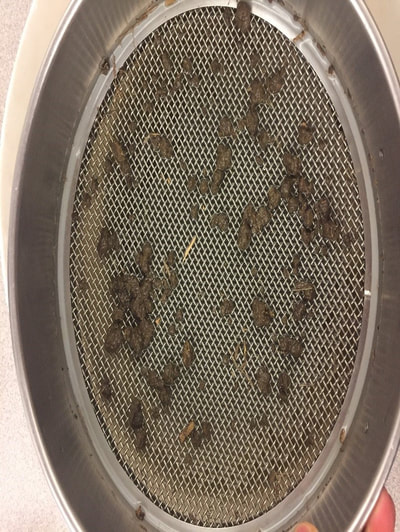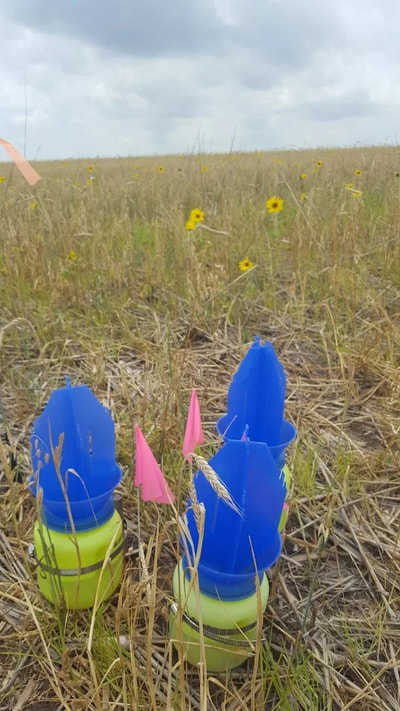|
The last cattle are off the last fall grazed field. All the samples are all collected. The freezers are full of more insects, forage, and soil samples than you could ever imagine. So, what have our researchers, technicians, graduate students, and intrepid undergraduates been up to all this time? Soils TeamThe soils team has been hard at work processing fertility samples collected from the spring planted plots. An important measure of soil health is wet aggregate stability, which allows us to assess the resilience of the soil aggregates when disrupted by water. A soil sample down to 5 centimeters was collected and gently broken up into small pieces to fit through an 8 millimeter (about 1/3 inch) sieve spaces. After the soil dries, we put it on a sieve with smaller holes (2 millimeters), submerge the soil on the sieve for a few minutes, and then gently lift in the soil on the sieve in and out of the water for 2 minutes. The large stable aggregates will stay on top of the sieve, and the rest of the soil will pass through. The soil that passed through then goes on to a smaller mesh sieve (250 micron mesh size), and the process is repeated. The soil that passes through that sieve is then poured on top of an even finer mesh sieve (53 micron), and submerged repeatedly, as before. The soil on top of each sieve is dried and weighed to get our final data, which tell what percent of the soil is large or small aggregates. Pollinator TEAMCollections of wild bees were performed between late May and early September using blue vane traps. Since then the pollination biology lab has begun the preliminary steps of specimen identification by pinning and separating specimens by morphological characters. Once processed, each bee is identified down to genus (although species information is recorded where possible) and a tally is taken to map the diversity and abundance of bee pollinators within the field for each treatment (i.e. fallow, grazed, or ungrazed). We were lucky enough to recover several thousand bee specimens over the course of the summer and are looking forward to reporting our findings. Forage TEAMCover crops were clipped before, during, and after cattle grazing. Cover crops and weeds are then sorted by species. By sorting the cover crops, we can gain a better understanding of what species grow well on the High Plains and what was available for the cattle to graze on. Sorting individual weed species helps us understand the impact grazing has on the weed populations. While sorting doesn’t sound like the most challenging activity, it takes a lot of time and patience. Most of the weed species we’ve encountered are common and easy to identify, but every now and then, a species comes along that we haven’t seen yet. It’s always a lot of fun to identify a plant you’ve never seen before! After clippings are sorted, they are dried, weighed, ground, and finally forage quality is assessed using NIR. Sorting of the 2017 spring planted cover crops is almost done and we can look forward to compiling that data.
2 Comments
|
Details
AuthorsThis blog is maintained by researchers at Colorado State University Archives
February 2018
Categories |









 RSS Feed
RSS Feed
